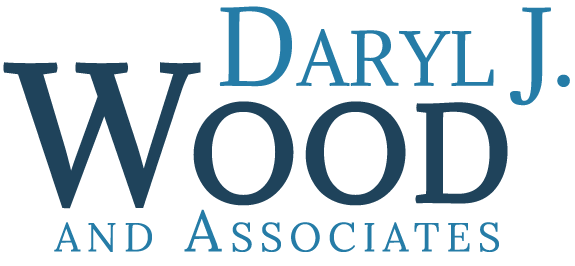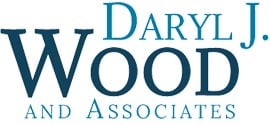The Michigan Vehicle Code requires the suspension or revocation of driver’s licenses for a variety of offense. In particular, MCL 257.303(2) requires the Secretary of State to revoke the driver’s license of a person with various prior drunk–driving convictions. As more and more of your criminal clients have their licenses suspended or revoked for repeat offenses and more new clients approach you to ask if there is anything you can do on their behalf, it is helpful to know what relief might be available to the average client. Generally, most attorneys would prefer to go to circuit court for a license restoration rather than the Secretary of State because the circuit court has historically granted more appeals. MCL 257.323 controls the circuit court’s jurisdiction to hear license restoration cases, however, and the Legislature has amended this statute several times to limit the types of cases that the circuit court can hear, making this area of practice confusing.
History
In order to review a driving record today, a person must remember that many convictions were treated differently in the past and did not result in a revocation. Understanding the history of driver’s license restoration in Michigan is necessary, since the law in effect at the time of the prior violation controls.[1] Moreover, driving records can be very confusing to read because driving privileges were not always revoked for a second drunk driving offense[2].
Before January 1, 1992, many attorneys took their clients to circuit court for relief from a revocation on the basis of hardship. A hardship appeal is generally accepted to be one based on a lack of public transportation and the lack of friends or family who can provide the transportation necessary for a person whose license was revoked to get to work, school, court-ordered activities, medical appointments and alcohol-rehabilitative activities. By filing the case in circuit court, an attorney was able to request a full or restricted license in almost every circumstance. According to the Secretary of State’s Driver License Appeals Practice Manual, circuit courts granted relief to petitioners 85 percent of the time before January 1, 1992. When the amendments went into effect on January 1, 1992, the circuit court was prevented from granting full or partial restoration of driving privileges to anyone who committed a drunk–driving offense on or after that date. The high number of appeals granted was one reason the Secretary of State sought a change in circuit court jurisdiction that required petitioners to exhaust their administrative remedies before proceeding in circuit court. As a result, circuit court jurisdiction has been reduced over the years. However, if a driver’s last offense for drunk driving was occurred before January 1, 1992, a petition in circuit court for restoration of a revoked driver’s license on the basis of hardship is still allowed.
The district courts were in charge of driver’s license sanctions for impaired driving offenses committed before October 1, 1999 and, unlike today, a person convicted of a second conviction for impaired driving offense within 7 years was still able to get a restricted license. Then, as now, however, a person with 2 convictions for operating while under the influence of liquor (OUIL) or unlawful blood alcohol level (UBAL) within a 7-year period or 3 drunk-driving offenses within 10 years had his or her driver’s license revoked for 1 year. If a new revocation occurred within 7 years of a previous revocation, the revocation period was for 5 years instead of 1 year.
Before October 1, 1999, the Secretary of State imposed all license sanctions to run consecutively. For instance, a person whose license was revoked on January 1, 1998, for 1 year as a result of 2 UBAL offenses was not eligible for an administrative review before the Driver’s License Appeal Division (DLAD) until December 31, 1999. If the same driver had his license revoked on February 1, 1998, for 5 years as a result of a third drunk-driving offense, he or she was not eligible for administrative review before DLAD until December 31, 2004. Consecutive driver’s license sanctions led to some drivers being precluded from getting a driver’s license until the year 2030, in extreme cases, because each time the driver was stopped for driving with a suspended or revoked license (DWLS)[3], the Secretary of State tacked on an additional mandatory like suspension or revocation.
As of October 1, 1999, the circuit courts are no longer able to grant relief from revocations on the basis of hardship for revocations except, as noted earlier, for a person whose last offense occurred before January 1, 1992. The only remaining challenge to revocations at the circuit court level is pursuant to MCL 257.323(4), which allows appeals to the circuit court only if the Secretary of State’s action was (1) in violation of the United States or State Constitution, (2) in excess of the Secretary of State’s statutory authority or jurisdiction, (3) made upon unlawful procedure resulting in material prejudice to the petitioner, (4) not supported by substantial, material, and competent evidence on the whole record, (5) arbitrary, capricious, or clearly an abuse or unwarranted exercise of discretion, or (6) affected by any other substantial and material error of law. You should consider any revocation after October 1, 1999, unavoidable unless your client can comply with MCL 257.323(4).
Circuit Court Vs. DLAD
As noted earlier, most attorneys prefer going to circuit court for a license restoration rather than pursuing a hearing in the DLAD, because the circuit court grants more appeals than the DLAD. Therefore, it is important to understand who is eligible to proceed in circuit court when the Secretary of State has suspended or revoked your client’s license.
What To Look For On A Driving Record For Circuit Court Eligibility
When looking at the driving record to determine whether your client is eligible for a hardship appeal in the circuit court, you must first determine when the client’s most recent prior offense for drunk-drinking. Was it before January 1, 1992, or before October 1, 1999? If the last prior drunk – driving offense occurred before January 1, 1992, your client is likely eligible for a hardship appeal in the circuit court. If the last prior drunk-driving offense occurred before October 1, 1999, your client may be eligible for a hardship appeal to set aside the additional mandatory revocations. In the case of prior offenses committed after October 1, 1999, hardship appeals are limited to review of a first implied consent suspension or refusal to take the datamaster test at the police station[4], certain defined driver assessment actions[5], and suspensions imposed under MCL 257.904(10) and/or (11).
Next, determine whether the client has had any additional mandatory revocations or suspensions as a result of a DWLS or other driving offense that occurred after October 1, 1999. A person who has an additional revocation or suspension under MCL 257.904 after October 1, 1999, will not be eligible to go to circuit court until he or she has served the mandatory revocation. However, a person who had additional mandatory revocations or suspensions imposed before October 1, 1999, is eligible for a hardship appeal in the circuit court.
Once you have determined circuit court eligibility, your client will need to get the paperwork necessary to ensure success. It is never advisable to go to circuit court to restore the license of a habitual drunk driver without first obtaining a substance abuse evaluation. Some judges prefer the use a narrative report, while other judges prefer use of the standard Secretary of State Substance Abuse Evaluation Form[6]. Until you know the judge’s preference, it may be advisable to get both. It is also a good idea to have your client’s friends, neighbors, and family address the nine questions listed in Appendix F of the 2005 Driver License Appeals Practice Manual.
If your client has a good, very good, or excellent prognosis in the substance abuse evaluation, three to five letters verifying support group attendance and sobriety and signature sheets showing attendance at a support group, you are ready to file a petition and affidavit for driving privileges along with an order for the Secretary of State to show cause. Be careful to review your client’s support group attendance sheets however, real signature sheets from a group like Alcoholics Anonymous or Narcotics Anonymous are easy to spot. If the signatures look like they were signed and dated at the same time to cover multiple weeks of attendance or the signatures in blue pen are all uniform and the black pen signature are all uniform, the sheets are likely forgeries. The client’s attendance should be at least one meeting a week.
In circuit court appeals of a first implied-consent suspensions or a suspension pursuant to the order of a trial court under MCL 257.328, jurisdiction is in the circuit court of the county in which the underlying arrest that prompted the suspension occurred. For all other circuit court appeals, jurisdiction is in the client’s county of residence[7]. According to MCL 257.323(2), you must give 20 days notice to the Secretary of State before you can schedule a hearing date. The Mailbox Rule applies to the notice, which means that as long as the paperwork was placed in the mailbox at least 20 days before the hearing date, you have complied with the notice requirement. Once you have filed with the court, you can serve the Secretary of State in Lansing by certified mail. Some jurisdictions require that you give a copy of the pleadings to the local county prosecuting attorney’s office. In Oakland and Wayne Counties, attorneys should send courtesy copies to the Attorney General’s office in Detroit[8].
Once you file all of the necessary paperwork, you will need to prepare your client for the hearing. Your client should be prepared for questions related to how he or she is currently getting to various destinations without driving and, of course, questions about AA or NA or other 12-Step support groups. At a minimum, your client should know which of the 12 Steps he or she is currently working and the Serenity Prayer, which is said at every AA or NA meeting. If the Court grants your client relief, you will need to prepare an order for the Secretary of State[9]. Pursuant to MCL 257.323(3), you have seven days to file a certified copy of the order with the Secretary of State. It is acceptable to fax and mail the order to the Secretary of State to get your client driving again. It can take the Secretary of State 14 to 21 days to process the order.
What do you need for a successful DLAD license restoration?
The general rules governing DLAD hearings can be found in Appendix C of the Driver License Appeals Practice Manual 2005[10]. Rule 13 is the key rule[11]. You will hear this rule mentioned more often than any other rule because it sets the standards for issuance of a license. The “perfect client” has a minimum of 12 months of sobriety (which means absolutely no alcohol or illegal drugs, not even nonalcoholic beer), has attended at least one AA or NA meeting a week, with signatures to verify attendance, knows the 12 Steps, has an excellent prognosis on the substance abuse evaluation, and has been out of any controlled environment (such as probation, inpatient treatment, or other residential treatment housing) for 12 months or more.
However, a client on medications for any psychological conditions will require special attention. That client will need additional documentation from his or her doctors stating the types and dosages of medications the client is currently taking, as well as the effects the medications will have on the client’s ability to drive a motor vehicle. If your client recently had medications changed, you may want to make sure the medications are working before requesting a hearing. In my experience, Secretary of State hearing officers are concerned that petitioners will not take medications as prescribed and thus experience a relapse.
A client who had a previous license restoration through DLAD or the circuit court and lost the license again as a result of other alcohol-related arrests will have problems getting the license back the first time he or she is eligible. The hearing officer is the first to point out the problem with your client’s credibility. After all, your client stated that he or she would never drink again in order to get the license restored the first time. Now you are asking the hearing officer to believe your client once again. Even though you are likely going to lose the appeal because of the prior restoration, you should still bring your client to DLAD as soon as possible. If your client is doing everything he or she is supposed to be doing, then you will at least set the clock for the next hearing, which will likely be successful.
Substance abuse evaluations are critical in this area of practice. Common problems with substance abuse evaluations are often a byproduct of inaccurate information from your client to the evaluator. You should provide the evaluator a copy of the client’s driving record with all the convictions highlighted, including any accidents with X3[12] classifications to ensure that the lifetime conviction history in the evaluation is correct. You should instruct your client to discuss any convictions and deferred sentences for controlled substance offenses, since the Secretary of State defines lifetime conviction history as including convictions for operating while intoxicated, impaired driving, or drug crimes or any other nondriving convictions involving alcohol or controlled substances. Substance abuse evaluations should include a copy of a drug screen and indicate the testing instrument used. Under relapse history make sure that your client properly addressed the lack of alcohol or drug use during his or her prior probationary periods because the hearing officers will ask if your client used alcohol while on probation.
Hearing officers will often be reluctant to grant a license to a client who has a history of relapses after lengthy periods of sobriety. Generally speaking, you need to address the reason for the last relapse, and your client will need to exceed the prior period of sobriety in order for the appeal to be successful.
Finally, success at a DLAD hearing does not require you to produce multiple witnesses. When you bring additional witnesses to testify, you multiply the number of opportunities for your client’s testimony to be contradicted. Even though your client carries the burden proof, you can typically get all the information that you need out of a well-prepared client. Just have a witness in reserve in case your client’s testimony varies from what you anticipated. It is also very important to remember that hearing officers have a limited amount of time to hear the testimony and draft the orders. Longer hearings are not necessarily the best.
Driver’s license restorations will continue to be a growing practice area, as long as legislators continue to create new ways for individuals to lose their driving privileges. Therefore, more and more lawyers will need to know what help is available to their clients.
[1] MCL 257.320e
[2] Historical and Statutory Notes of MCL 257.303
[3] MCL 257.904
[4] MCL 257.625f controls implied consent suspensions for failure to submit to a chemical test upon the request of a police officer at the police station. The chemical test can be a DataMaster machine test, a blood draw, or a urine sample.
[5] MCL 257.320, 257.303(1)(d), and 257.310d.
[6] You can find this form on the Michigan Secretary of State website at <http://
[7] MCL 257.323(1)
[8] The Attorney General’s office will accept a copy by fax at (313) 456-0061 as long as the originals have been sent to the Secretary of State in Lansing at Driver License Appeals Division, Michigan Department of State, P.O. Box 30196, Lansing, MI 48909-7696.
[9] A recommended Order can be found at http://
courtforms
cc268.pdf(Accessed 3/4/09).
[10] The administrative rules can also be found at <http://
[11] Mich Admin Code, R257.313.
[12] According to the 1999 Driver License Appeals Practice Manual, Appendix N, p.5, a crash code of X3 means the person had been drinking.


